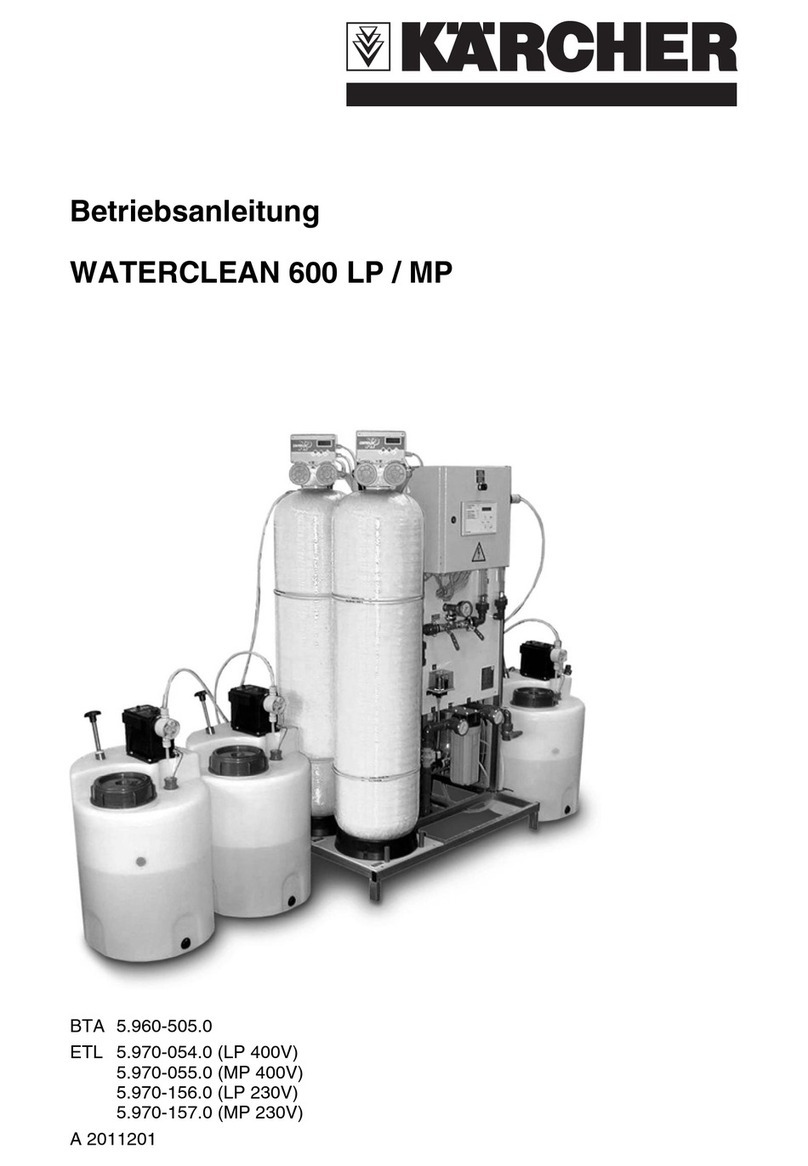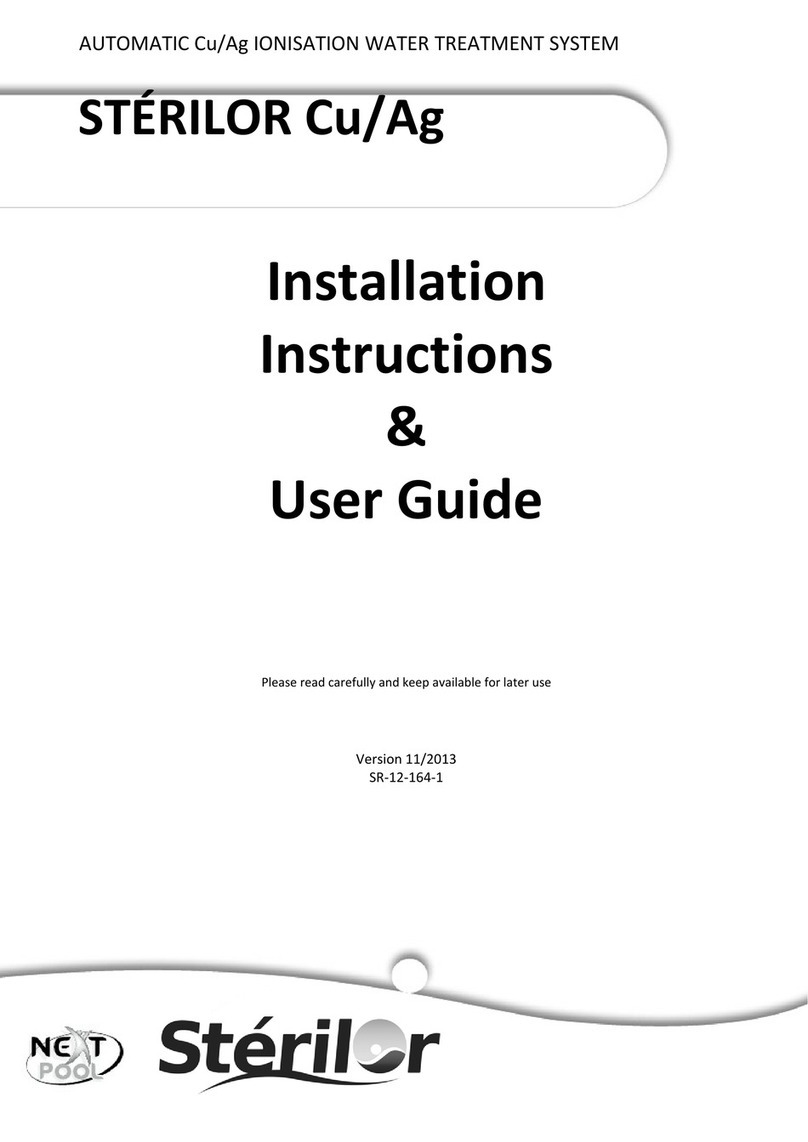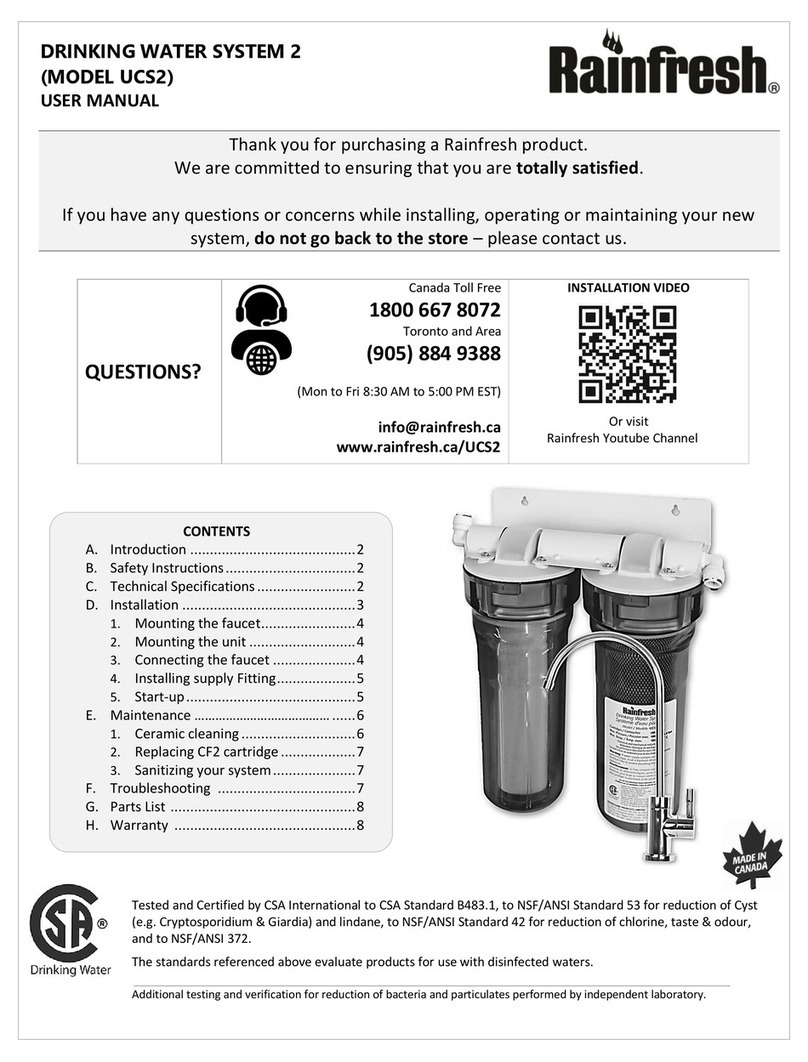4
CONTENTS WTC 600 LP / MP
Service Handbook 08.2004
Contents
3.2.5.2 Perform flocking test...............................................................................................26
3.2.5.3 Evaluate flocking test .............................................................................................26
3.3 Connecting the Equipment ................................................................................ 27
3.3.1 Connections, Valves and Indicators.......................................................................27
3.3.1.1 Pressure-increase Module .................................................................................... 28
3.3.1.2 RO Module with Preliminary Filters....................................................................... 28
3.3.2 Electrical Connections ...........................................................................................29
3.3.2.1 Pressure-increase Pump ...................................................................................... 29
3.3.2.2 Preliminary Filter ................................................................................................... 29
3.3.2.3 MeteringStation .................................................................................................... 29
3.3.2.4 Float Switch........................................................................................................... 31
3.3.2.5 Reverse Osmosis System.................................................................................... 31
3.4 Starting Operation ...............................................................................................31
3.4.1 MeteringStation .....................................................................................................31
3.4.2 Media filter and activated carbon filter ....................................................................32
3.4.2.1 InitialFilling ............................................................................................................ 32
3.4.2.2 Starting Operation ................................................................................................. 32
3.4.2.3 Backwashing / Regeneration ................................................................................ 32
3.4.2.4 Programming......................................................................................................... 33
3.4.3 Starting Operation of the RO System ....................................................................35
3.4.3.1 Operating Levels and Passwords ......................................................................... 35
3.4.3.2 Menu Selection...................................................................................................... 35
3.4.3.3 Selection of an Option ........................................................................................... 35
3.4.3.4 Selecting Several Arguments at the Same............................................................ 36
3.4.3.5 Adjusting Operating Parameters and Balancing Values .........................................36
3.4.3.6 Acknowledging Data Inputs .................................................................................. 36
3.4.3.7 OperationalInterruptions....................................................................................... 36
3.4.3.8 Initial startup...........................................................................................................38
3.4.4 Normal Operation ...................................................................................................40
3.4.4.1 Operating Messages for Normal Operation .......................................................... 41
3.4.5 Putting Out of Operation.........................................................................................42
3.4.6 Disinfection.............................................................................................................43
4 Maintenance.............................................................................. 44 - 62
4.1 Fine Filter ............................................................................................................. 44
4.2 Metering Station WTC 600 CD............................................................................ 44
4.3 Reverse Osmosis Module (RO Module) ............................................................ 45
4.3.1 RO Filter Replacement...........................................................................................45
4.4 Cleaning in Case of Malfunction........................................................................ 46
4.4.1 Design of the Flushing and Disinfection Equipment ...............................................47
4.4.2 Disinfection.............................................................................................................49
4.4.3 Acidic and Alkaline Cleaning ..................................................................................50
4.4.3.1 Cleaning Solution for Acidic Cleaning ................................................................... 51





























